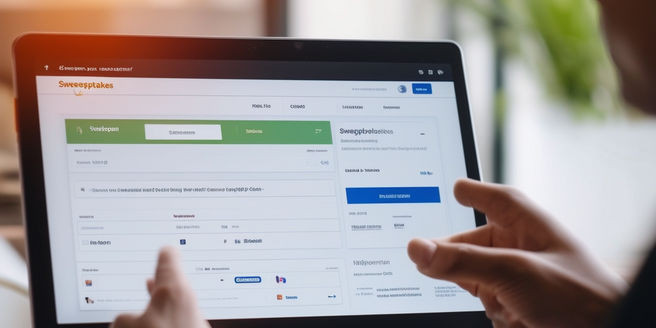
Understanding the Basics of Sweepstakes Websites
Sweepstakes websites are designed to offer participants a chance to win valuable prizes through random draws. These platforms are known for their ability to lure individuals with the exciting opportunity of winning something valuable without any stringent requirement. They are popular particularly because they add an element of excitement and possibility to the usually mundane task of product discovery. They are typically categorized under promotional marketing tools used by companies to attract potential customers or engage their current user base. The general principle behind these websites is fairly simple – users enters this sweepstake in hope to win a reward, which, in many cases, prompts them with product awareness or increases brand engagement.
Analyzing the Success Factors of Sweepstakes Websites
Successful sweepstakes websites stand out due to common traits: appealing prizes relevant to their target audience, simple and user-friendly participation processes, and transparent, fair procedures overseen by independent bodies. By combining these elements, they cultivate credibility, attracting more participants which reinforces their success. Thus, these sites prevail with a persistent focus on quality, trust, and user satisfaction, making them superior to their competitors.
Strategic Planning for Sweepstakes Campaigns
Strategic planning is central to any successful sweepstakes campaign. At the planning stage, it’s also crucial to identify the type of metrics that will be used to measure the campaign’s success. In order to discern the effectiveness of the campaign, regular monitoring and assessment of these metrics throughout its duration is necessary. Outcome objectives should be clearly defined from the onset, whether they be related to generating brand awareness, acquiring new customers, or promoting a new product. In addition, consideration should be given to the size and nature of the prize, the method of entry, and the duration of the campaign. Proper planning ensures that the campaign resonates with the target audience and fulfills its intended purpose.
Implementing Effective Sweepstakes Techniques
Achieving success in sweepstakes can be significantly enhanced by adopting a few basic strategies. To streamline the process and boost involvement, make the registration process straightforward and swift, and employ a clear opt-in message; this drive participation by ensuring potential entrants understand the benefits. It’s also beneficial to provide several prizes or rewards, and ‘early bird’ incentives to prompt more frequent and early engagement.
Capitalizing on social media can also considerably enhance the reach and effectiveness of the sweepstakes. By spreading the word through these platforms, the visibility of the sweepstakes increases among potential participants, enhancing participation and engagement levels.
In the current digital era, ensuring the sweepstakes is accessible across multiple platforms – whether smartphone, tablet, laptop, or desktop computer – isn’t just about improving the user experience, it can lead to heightened engagement and visibility. This integrated approach of multiple engagement prongs leads to a more successful sweepstakes experience.
Measuring the Performance of Your Sweepstakes Strategy
To evaluate the effectiveness of your sweepstake strategy, observe performance indicators like the total number of participants, conversion rates, and engagement levels. Tracking these metrics provides a clear picture of the campaign’s success against preset objectives and highlights areas requiring improvement. Activities following the sweepstakes, such as survey results collection or seeking participant feedback, can offer insights for future campaigns. With the idea of steady progress and continual improvement in promotional marketing being critical, incorporating feedback into improvement processes refines your strategy and enhances success. It’s crucial to prioritize these elements to drive promotional marketing that captivates your desired audience.
